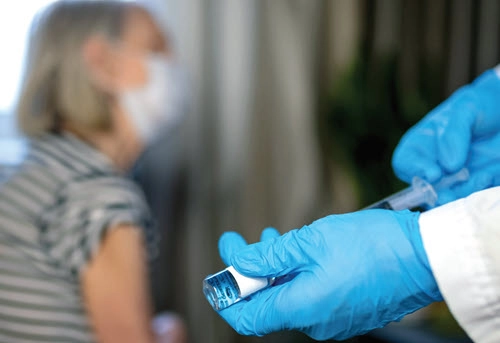CDC Releases Guidelines For Vaccinating Many Of Your Patients
Overlooked group finally gets some notice from authorities. If you think the COVID-19 vaccines should go straight to you to administer to your patients, your views are now being more publicly represented. The Centers for Disease Control and Prevention has released guidelines specifically for vaccination of homebound patients. The guidance is a good step forward, because the homebound population is getting overlooked in the current vaccination process, advocates say. “The 12 million Americans who are homebound and receive care from home health agencies, home care providers, and hospices are not capable of traveling to a local or state health department, a mass immunization site, or the local pharmacy to receive vaccination,” emphasizes the National Association for Home Care & Hospice. “This large population of America’s most vulnerable need the vaccine to come to them or they will likely not receive it,” the trade group warns. Guidelines the CDC recommends include: The document also addresses topics such as transport with predrawn syringes rather than vials, appropriateness of vaccinating homebound persons’ family members and caregivers, and who qualifies as homebound. The CDC’s homebound definition may not be quite as tight as Medicare’s. “Homebound persons include those that need the help of another person or medical equipment such as crutches, a walker, or a wheelchair to leave their home, or their medical provider believes that their health or illness could get worse if they leave their home, and they typically do not leave their home,” the federal agency says in the guidance. While this new guidance is welcome, it’s only the first step, NAHC emphasizes. “These Americans and their families and loved ones would [be] helped enormously if the CDC could address the essential issue as to how home care providers can access the vaccine for their patients,” the trade group maintains. “The recent expansions of access through pharmacies and mass immunization sites is a great improvement in vaccine access, but it does not help the 12 million homebound patients, virtually all of whom fall into a high priority classification.” What’s Needed: “To effectively provide vaccinations to the homebound may require direct supply to the home care and hospice health care companies that care for these patients on a daily basis,” NAHC suggests. Don’t Overlook This Group When Securing Vaccinations Meanwhile, hospices are still struggling to get staff vaccinated in some states, regions, and localities. When securing staff vaccinations, don’t forget to include unpaid workers in your efforts. In its list of healthcare personnel (HCP) who should top the COVID-19 vaccination priority list, the CDC includes “students and trainees” in its example list. Further, the CDC defines HCP as “all paid and unpaid persons serving in healthcare settings who have the potential for direct or indirect exposure to patients or infectious materials,” according to its website. Note: The CDC guidance is at www.cdc.gov/vaccines/covid-19/clinical-considerations/homebound-persons.html. See more information about HCP and other CDC vaccination guidelines at www.cdc.gov/coronavirus/2019-ncov/vaccines/recommendations/hcp.html.

